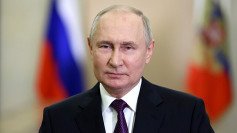More than 20 warships from the People's Liberation Army Navy (PLAN) and the U.S. Navy are now engaged in separate naval maneuvers in different parts of the South China Sea.
The gathering of seapower from two of the strongest militaries in the Indo-Pacific is raising concerns tensions in the South China Sea, which China claims to own almost in its entirety, are not ebbing despite the economic dislocations in both China and the United States triggered by the COVID-19 pandemic.
A PLAN naval force of undetermined strength is now conducting maritime combat drills off the disputed Paracel Islands, which is administered by China but also claimed by Vietnam. The Paracels are called the Xisha Islands by the Chinese.
On Friday, China's Foreign Ministry said the PLAN naval drills in the South China Sea off Xisha is within the country's sovereignty and are reasonable. Spokesperson Zhao Lijian said the Xisha Islands are China's inherent territory.
"Some countries outside the region often travel thousands of miles to the South China Sea to engage in large-scale military activities, and show off their power, which is the fundamental reason that affects the stability in the South China Sea," said Zhao.
He brushed aside the United States' accusation made Thursday the drill destabilizes the situation in the already volatile South China Sea. Last week, China announced five days of naval drills starting July 1 near the Paracel Islands.
The U.S. Defense Department (DoD) previously voiced concern about China holding military exercises in the South China Sea. It also assailed the PLAN naval maneuvers as counter-productive to efforts at easing tensions and maintaining stability. It again accused China of militarizing the South China Sea.
Two powerful U.S. Navy carrier strike groups (CSGs) centered around the two nuclear powered supercarriers, USS Nimitz (CVN-68) and USS Ronald Reagan (CVN-76), are now somewhere in the South China Sea.
The Navy said both CSGs are carrying out operations and exercises to support a free and open Indo-Pacific. Both CSGs fall under the operational command of Rear Admiral George M. Wikoff, commander, Task Force 70 (CTF 70).
Adm. Wikoff is also Commander, Carrier Strike (CSG) 5, the Navy's forward deployed strike group centered around the USS Ronald Reagan and its embarked air wing, Carrier Air Wing 5 (CVW 5).
CTF 70 units are forward-deployed to the U.S. Seventh Fleet area of operations to support the security and provide stability in the Indo-Pacific region.
Adm. Wikoff said the purpose of the ongoing maneuvers is to show an unambiguous signal to our partners and allies "that we are committed to regional security and stability." He said the exercises aren't a response to those being conducted by the PLAN.






